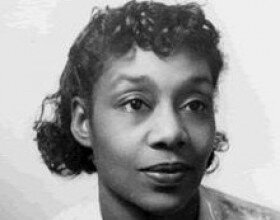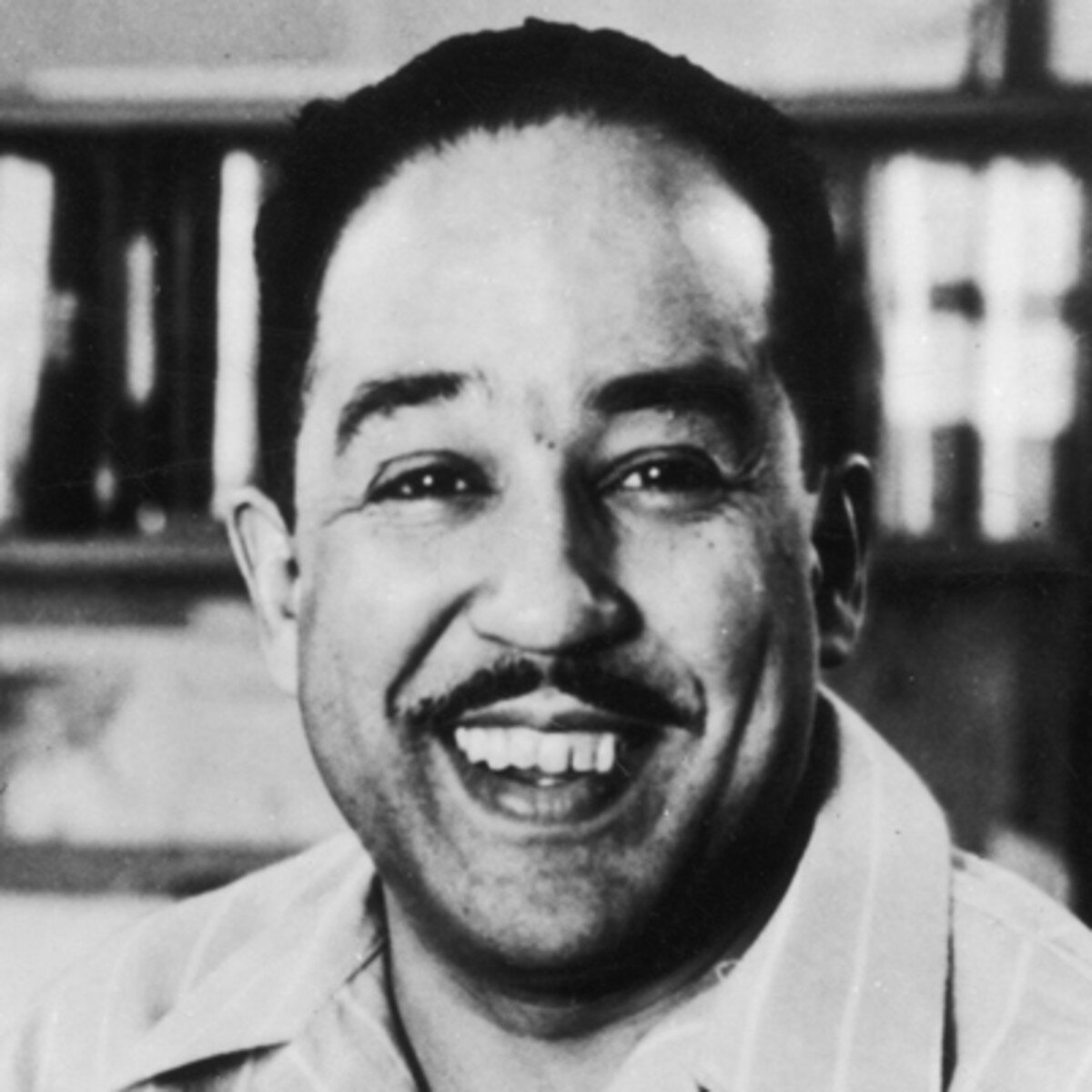Great American Plays that you might not have heard of...
Table of Contents:
Star of Ethiopia by W.E.B. Du Bois (available online)
They That Sit in Darkness by Mary Burrill (available as anthology)
The Purple Flower by Marita Bonner (available as anthology)
Mulatto: A Tragedy of the Deep South by Langston Hughes
Funnyhouse of a Negro by Adrienne Kennedy (available as anthology)
For Colored Girls Who Have Considered Suicide / When The Rainbow is Enuf by Ntozake Shange
Home by Samm-Art Williams
Twilight: Los Angeles, 1992 by Anna Deavere Smith (available on Amazon)
School Girls; or The African Mean Girl Play by Jocelyn Bioh (available on Amazon)
1911
Star of Ethiopia
by W.E.B. Du Bois
A pageant celebrating black excellence throughout history. Star of Ethiopia was written by the great American historian, sociologist, and civil rights advocate W.E.B. Du Bois as a piece of educational theater to empower black americans and enlighten whites as to “reveal the negro… as human”
The premiere was a critical and artistic success and toured the east coast for three years being seen by roughly 35,000 audience members.
The pageant is composed of five scenes told through dance, music, and speeches: It begins in a prehistoric Africa where Black men invent the ability to mold iron, gifting the world their new knowledge. This discovery allows the great African empires to flourish, specifically highlighting the artistic and cultural achievements of Ethiopia, Sudan, and Zimbabwe. Next we are shown a pinnacle of Black society through the Egyptian empire only to be followed with the immense tragedy and devastation of the Trans-Atlantic Slave Trade. Though this section is full of pain, it also takes time to highlight the beauty and strength found in resistance to this oppression. The pageant ends with a sequence called The Vision Everlasting which shows African-Americans rising up post slavery into various professional successes as the the Star of Ethiopia continues to shine forever.
1916
Rachel
by Angelina Weld Grimke
At the first production of Rachel the program opened with the following note: "This is the first attempt to use the stage for race propaganda in order to enlighten the American people relative to the lamentable condition of the millions of Colored citizens in this free republic."
The play discussed in detail the myriad of struggles faced by women of color and their families during the start of the 20th century. In particular, it played on the audience's expectation that a woman’s deepest desire would be to have children of her own. The audience is made to watch a brilliant, persevering, and brave woman question the feasibility of bringing black children into a white supremacist society and ultimately decide it would not be fair to her hypothetical question the play places white supremacy as antithetical to traditional views of femininity.
Rachel is a hopeful schoolteacher with dreams of one day having her children of her own. As she ages, she begins to see the true face of American racism both through her own experiences as well as those of her family and students. In the end she resolves to never have children so that they will not endure the same hardships as her students.
1919
They That Sit in Darkness
by Mary Burrill
This play is significant in both the ways it discusses poverty and its portrayal of women. At the time, melodrama was an incredibly popular genre and the women in melodramas tended to be somewhat hysterical. Mary Burrill takes a pioneering stab at feminst realism with the way she writes women and their struggles against generational poverty. They That Sit in Darkness also function as a protest plays advocating for the reproductive rights of women as a means to escape poverty.
A family struggles with generational poverty as the compiled stresses of full-time work and numerous children causes parents to die young. To take care of the family the older siblings must give up on the chance to go to college and take jobs that will only perpetuate the cycle.
1928
The Purple Flower
by Marita Bonner
A stylistically experimental allegory for racial relations and sexism in the United States, published in the Black Liberation Magazine, “The Crisis”
The white devils, angelic figures with red horns, live atop a hill where a purple flower grows. The Us’s built the town the White Devil’s live in but are now forced to live in the valley below. The Us’s dream of one day seeing the purple flower on the hill and discuss different ways of being accepted by the white devils. Some argue that dutiful work will earn them the admiration of the white devil’s while others claim they can learn how to gain respect from books. The young Us’s however respond by saying that 200 years of physical labor has yet to earn them a drop of respect from the people on the hill and books won’t tell them how to fight the white devils because the books were all written by the white devils. In the end the Us’s combine pieces of themselves to create New Man who will lead them in the battle to retake the hill.
1935
Mulatto: A Tragedy of the Deep South
by Langston Hughes
In 1935 Langston Hughes tried his hand at the very popular mixed race tragedy that was common in 19th century theater. His play is notably different though as it is not a melodrama nor a love story that centers bloodlines as the primary barrier to being together. Instead it explores the tension experienced by biracial men when they claim their inheritance.
Robert, the mixed son of Colonel Norwood and Cora Lewis returns to the Norwood Plantation after many years and asserts himself as Norwood’s heir. His traumatized family refuses to help him and tells him only to flee the inevitable mob. The conflict escalates as Norwood and the townsfolk refuse to view Robert as a legitimate heir and he refuses to back down.
1964
Dutchman
by Amiri Baraka
Amiri Baraka uses the story of a toxic flirtation between two subway riders as a political allegory for race relations in the mid 1960s. The Black man wants acceptance from the white woman but also wishes to retain his own agency. The white woman functions as a hunter, manipulating the situation in a desire to always maintain the upper hand.
Lula, a white woman, and Clay, a black man, ride a subway in New york City. They flirt but their relationship is toxic and destructive to Clay as he attempts to contort who he is to fit Lula’s desires only for Lula to fabricate new wrongs he must repent for. Clay realizes he has been put into an impossible situation, a double bind, where he can never act in a way Lula won’t criticize. He decides he’s better off ignoring this newfound realization however and hopes to find a way to peacefully coexist with Lula, an idea she find utterly loathsome.
Funnyhouse of a Negro
by Adrienne Kennedy
This play explores the intersection between race and gender while stylistically fusing the aesthetic of the Black Arts Movement with Theater of the Absurd. This fusion allows the audience an insider's perspective to the anxiety and alienation Kennedy felt as a Black woman in the United States.
Sarah is a young woman who struggles with her biracial identity. The stage functions as Sarah’s mind and Kennedy uses figures from history to stage Sarah's internal conflict between her white and black ancestry as Sarah tries to fragment herself into two distinct identities.
1970
Les Blancs
by Lorraine Hansberry
Lorraine Hansberry’s final work was inspired by “a visceral reaction” to Jean Genet’s 1959 play Les Negres, which she felt exotified colonialmism in Africa and downplayed the long lasting repercussions of that imperialist practice.
Tshembe Matoseh, a world travelled businessman with a white wife and biracial son returns to the village where he grew up. There he must reconnect with his family and pick a side in the struggle for independence over continued colonization. Through this process his ancestral tethers and childhood friendships are placed in conflict with the institutional power being offered by the colonial forces.
1976
For Colored Girls Who Have Considered Suicide / When the Rainbow is Enuf
by Ntozake Shange
Shange is a novelist, playwright, black feminist, and a prominant member of the Black Arts Movement. She was awarded countless fellowships and awards throughout her life for her various writings. She is also the sister of Mosaic guest artist Ifa Bayeza.
For Colored Girls… is a choreopoem composed of 20 separate poems choreographed to music that weaves interconnected stories of love, empowerment, struggle and loss into a complex representation of sisterhood. The cast consists of seven nameless African-American women only identified by the colors they are assigned. They are the lady in red, lady in orange, lady in yellow, lady in green, lady in blue, lady in brown, and lady in purple. Subjects from rape, abandonment, abortion and domestic violence are tackled.
1979
Home
by Samm-Art Williams
Samm-Art Williams has clout in many, many circles. In his youth he was a successful actor and the boxing companion of Muhammad Ali before he became a playwright. After a few decades of writing he began a career as a successful film actor and now holds the position of Artist in Residence at North Carolina Central University.
Home is a bildungsroman about a young man traveling across the continental united states throughout the 1960s and 1970s. In a way it functions as an American Candide through the protagonist’s, Cephus Miles, beliefs and ideals being called into question by the experiences he has.
1987
The Piano Lesson
by August Wilson
A part of the ten play Pittsburgh Cycle which includes many of August Wilson’s most famous plays including Fences, Ma Rainey’s Black Bottom, and Joe Turner’s Come and Gone. August Wilson is one of the rare playwrights to win two Pulitzer Prizes for drama as well as two Tony Awards for best play and be a member of the American Theatre Hall of Fame.
Set in 1936 Pittsburgh during the aftermath of the Great Depression, The Piano Lesson follows the lives of the Charles family in the Doaker Charles household and an heirloom, the family piano, which is decorated with designs carved by an enslaved ancestor. The play focuses on the arguments between a brother and a sister who have different ideas on what to do with the piano.
The Piano Lesson seems to ask: "What do you do with your legacy, and how do you best put it to use?"
1994
Twilight: Los Angeles, 1992
by Anna Deavere Smith
Anna Deavere Smith is a multi-faceted theatrical talent who has worked as a playwright as well as a director and an actor. She can be seen on popular shows such as The West Wing and Nurse Jackie.
She is one of the only people to be awarded a Drama Desk Award for Outstanding One-Person Show two years in a row and is the Founding Director of the Institute on the Arts and Civic Dialogue at NYU
Twilight: Los Angeles, 1992 is a one woman show originally performed by Smith herself about the 1992 LA riots. Composed from a series of more than 300 interviews Smith conducted. A primary example of verbatim theater as the only text in the play comes directly from the interviews Smith conducted.
2012
Choir Boy
by Tarell Alvin McCraney
McCraney is most likely best known for the 2016 film Moonlight which he based on his own play In Moonlight Black Boys Look Blue for which he won an Academy Award for Best Adapted Screenplay. His play with music Choir Boy saw an incredibly successful 2012 run on the West End and ran on Broadway in 2018. Tarell Alvin McCraney is the sitting Chair of Playwriting at the Yale School of Drama
For half a century, the Charles R. Drew Prep School for Boys has been dedicated to the education of strong, ethical black men. One talented student has been waiting for years to take his rightful place as the leader of the legendary gospel choir. But can he make his way through the hallowed halls of this institution if he sings in his own key?
2015
Gloria
by Branden Jacobs-Jenkins
A 2016 MacArthur Fellow, Branden Jacobs-Jenkins’ plays have won Obie, Tonys, and twice placed as finalists for the Pulitzer prize, including for 2015’s Gloria.
The play centers the struggles and monotony of the American workplace. The escalating tensions of the office and reputation of being an “office freak” push one of the employees to attack and kill many of her coworkers. The survivors immediately stop their bickering over who will get to write a story of a famous local singer and instead begin bickering over which of them deserves a book deal based on the events of the shooting.
2017
School Girls; or The African Mean Girls Play
by Jocelyn Bioh
Jocelyn Bioh is an actor, a playwright at the Manhattan Theatre Club, and the current resident playwright at Lincoln Center.
Paulina, the reigning queen bee at Ghana's most exclusive boarding school, has her sights set on the Miss Universe pageant. But the arrival of Ericka, a new student with undeniable talent and beauty, captures the attention of the pageant recruiter--and Paulina’s hive-minded friends. This buoyant and biting comedy explores the universal similarities (and glaring differences) facing teenage girls across the globe. How far would you go to be queen bee?























